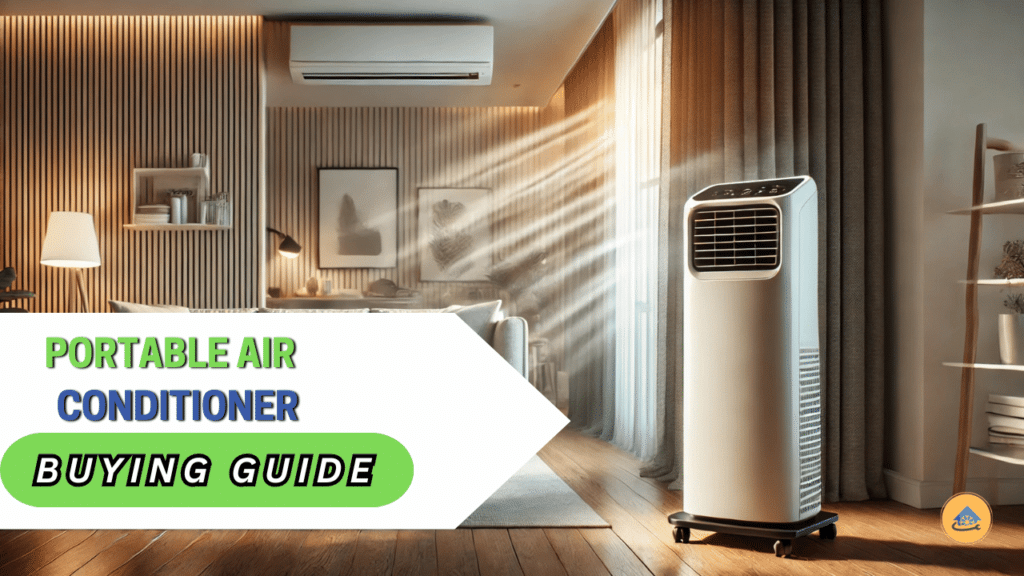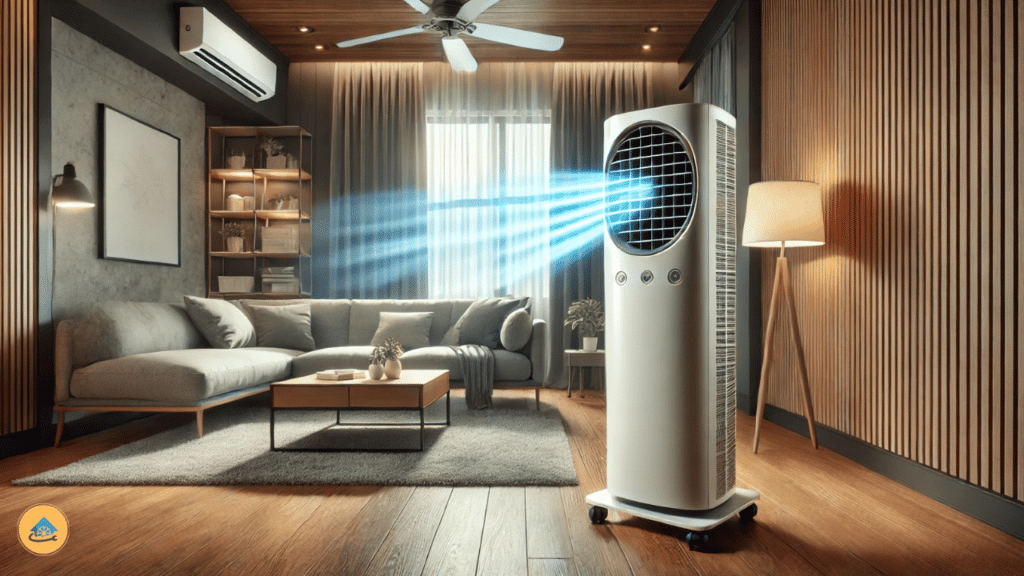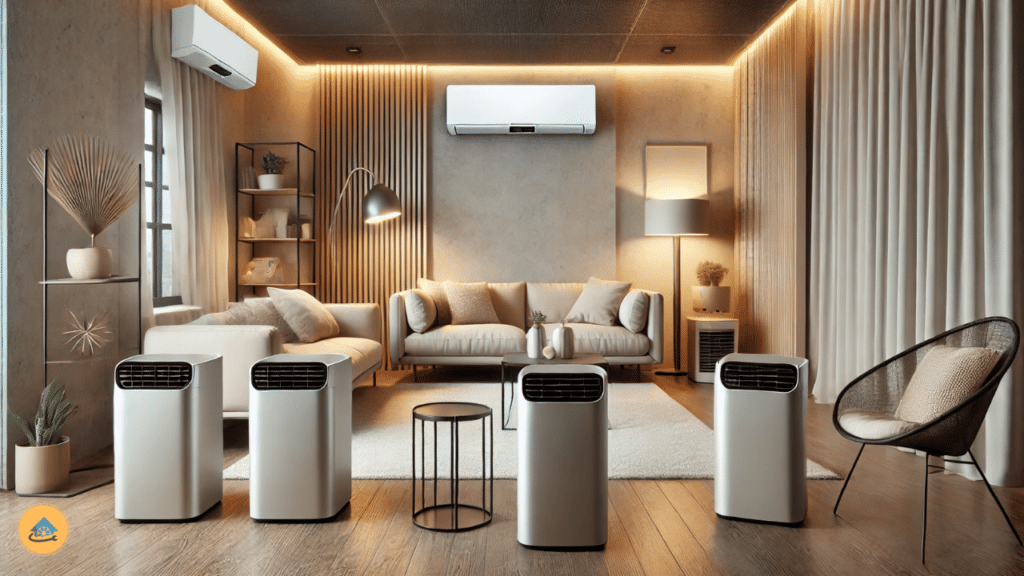Looking to buy a portable air conditioner? You need to consider several factors.
These include cooling capacity, size, and energy efficiency. Portable air conditioners are perfect for cooling small spaces. They offer flexibility and convenience. But with many options available, making the right choice can be tricky. Understanding what to look for is crucial.
This guide will help you with key factors. You will learn about cooling capacity, energy use, and noise levels. We will also discuss price and maintenance. By the end, you will be ready to choose the best portable air conditioner for your needs. Stay cool and make an informed decision.
Room Size And Btu
When selecting a portable air conditioner, room size and BTU are critical factors to consider. The air conditioner’s cooling capacity, measured in BTUs (British Thermal Units), must match your room’s size to ensure efficient cooling. Let’s dive into the details of measuring room dimensions and matching BTU to room size.
Measuring Room Dimensions
First, measure your room’s dimensions to determine its size. This information is essential in choosing the right portable air conditioner.
- Measure the length and width of the room in feet.
- Multiply the length by the width to get the square footage.
For example, a room that is 10 feet long and 12 feet wide has a size of 120 square feet.
Matching Btu To Room Size
Once you know your room’s size, use the following table to match it with the appropriate BTU rating:
| Room Size (sq. ft.) | BTU Rating |
|---|---|
| Up to 150 | 5,000 BTU |
| 150 – 250 | 6,000 BTU |
| 250 – 350 | 8,000 BTU |
| 350 – 450 | 10,000 BTU |
| 450 – 550 | 12,000 BTU |
| 550 – 700 | 14,000 BTU |
Choosing the right BTU ensures efficient cooling. A unit with too low BTU will not cool the space effectively. A unit with too high BTU can cool too quickly without dehumidifying properly.
Consider your room size and match it with the right BTU. This will help you select the best portable air conditioner for your needs.

Energy Efficiency
Choosing a portable air conditioner involves many factors. One key factor is energy efficiency. Energy-efficient models save money and reduce environmental impact. They use less energy to cool your space.
Energy Star Ratings
Energy Star ratings help identify the most efficient units. These models meet strict guidelines. They save energy and cost less to operate. Check for the Energy Star label. It ensures the unit meets high standards.
Operating Costs
Consider the operating costs of the air conditioner. Efficient models use less electricity. This lowers your energy bills. Look at the unit’s EER (Energy Efficiency Ratio). A higher EER means better efficiency. It also means lower costs.
Noise Levels
Consider noise levels when buying a portable air conditioner. Lower decibel units offer quieter operation, enhancing comfort. Check product reviews for sound performance details.
Choosing a portable air conditioner involves several factors. One important factor is noise levels. No one likes a noisy appliance disturbing their peace. So, understanding noise levels is essential. Let’s explore this topic in detail.
Decibel Ratings
Decibel (dB) ratings measure sound intensity. Lower dB ratings mean quieter operation. Most portable air conditioners range between 50 to 70 dB. For a quiet environment, aim for units below 60 dB. Always check the product’s specifications for dB ratings. This information helps in making an informed decision.
Quiet Operation Models
Some models are designed for quiet operation. These units use advanced technology to reduce noise. Brands often highlight these models in their lineup. Look for terms like “quiet operation” or “silent mode”. These features ensure minimal disruption in your space. Always read reviews to confirm the unit’s quietness. User feedback can provide real-world insights.

Installation Requirements
When choosing a portable air conditioner, consider the installation requirements. Proper installation ensures optimal performance and efficiency. Here, we discuss key aspects such as window kit compatibility and ventilation needs.
Window Kit Compatibility
Most portable air conditioners include a window kit. The kit helps to vent hot air outside. Check if the kit fits your window type. Some kits fit sliding windows. Others are suitable for double-hung windows. Measure your window before purchase. Ensure the kit fits securely. A proper fit prevents air leaks.
Ventilation Needs
Portable air conditioners need proper ventilation. They remove hot air from the room. This hot air needs an exit path. Usually, a window serves as the exit. Some units also allow venting through a wall or ceiling. Consider the venting options your space allows. Read the manual for specific instructions.
Venting affects the unit’s efficiency. Poor ventilation leads to increased energy use. Ensure there is enough space for the hose. Avoid bending or kinking the hose. This restricts airflow. Proper installation and ventilation keep your room cool and comfortable.
Portability Features
Choosing a portable air conditioner means you need to focus on portability features. These features ensure ease of movement and convenience. Two main aspects to consider are weight and wheels, and handle design.
Weight And Wheels
The weight of the portable air conditioner is crucial. A lighter unit is easier to move around. Most portable air conditioners weigh between 50 to 80 pounds. Look for units with durable wheels. They make it easy to transport the air conditioner from room to room.
Here is a simple table to help you understand the importance of weight and wheels:
| Feature | Importance |
|---|---|
| Weight | Lightweight units are easier to move |
| Wheels | Durable wheels ensure smooth transport |
Handle Design
The handle design is another key factor. A well-designed handle makes moving the unit easy. Look for handles that are sturdy and comfortable to grip.
- Sturdy handles prevent accidents
- Comfortable grips reduce strain
- Handles on multiple sides offer flexibility
Consider these portability features carefully to ensure your portable air conditioner meets your needs.
Cooling Modes
Consider the cooling modes available in a portable air conditioner. Some units offer multiple settings like fan-only, dehumidify, and sleep mode. Check if these modes meet your needs for comfort and efficiency.
When choosing a portable air conditioner, cooling modes are vital. Different modes cater to different needs. They enhance your comfort and convenience. Let’s explore three key aspects under cooling modes.
Fan Speeds
Portable air conditioners come with various fan speeds. This feature allows you to control the airflow. Choose a model with at least three fan speeds. Low speed for gentle cooling. Medium for moderate. High speed for rapid cooling. This flexibility ensures you get the right cooling intensity.
Dehumidifier Function
Many portable air conditioners have a dehumidifier function. This feature removes excess moisture from the air. It is particularly useful in humid climates. It helps prevent mold and mildew. Look for units with a high dehumidification rate. This ensures your space remains dry and comfortable.
Maintenance And Cleaning
Consider maintenance and cleaning when buying a portable air conditioner. Look for easy-to-clean filters and accessible parts. Regular maintenance ensures efficiency.
Maintaining and cleaning your portable air conditioner is vital. It ensures the unit works efficiently. Regular upkeep can extend its lifespan. It also helps to maintain good air quality. Let’s dive into two key areas: filter types and drainage options.
Filter Types
- Portable air conditioners come with different filter types. The most common are reusable and washable filters. These are easy to clean. Simply rinse them under running water. Allow them to dry completely before reinstalling.
- Some units have carbon filters. These help to remove odors. They need replacement every few months. Check the manufacturer’s instructions for exact timelines.
- HEPA filters are another option. They trap fine particles like dust and pollen. These filters are ideal for allergy sufferers. HEPA filters also need regular replacement. Always follow the unit’s manual for guidance.
Drainage Options
- Portable air conditioners remove moisture from the air. This water needs to be drained. There are several drainage options available.
- Manual drainage is one method. Here, you need to empty the water tank regularly. This is simple but requires frequent attention.
- Self-evaporating units are more convenient. These models automatically expel water. They reduce the need for manual draining. Some units have a continuous drain option. You can attach a hose to direct water to a drain or outside. This method is ideal for long-term use.
- Remember to keep the drainage system clean. This prevents mold and mildew. Regular maintenance ensures efficient operation. It also enhances the unit’s longevity.

Additional Features
When buying a portable air conditioner, additional features can enhance your experience. These extra functionalities often provide greater convenience and control. Let’s explore some of the key additional features you might want to consider.
Remote Control
A remote control is a handy feature for a portable air conditioner. It allows you to adjust the settings from a distance. This is especially useful if you are sitting or lying down. You won’t need to get up to change the temperature. Look for models with user-friendly remotes. Simple buttons and clear displays make it easier to use.
Programmable Timer
A programmable timer lets you set the air conditioner to turn on or off at specific times. This can save energy and money. You can set it to start cooling before you arrive home. Or, you can schedule it to turn off after you fall asleep. This feature provides flexibility and convenience. It’s a great way to manage the cooling of your space.
Frequently Asked Questions
What Features To Look For In Portable Air Conditioners?
When buying a portable air conditioner, consider cooling capacity, energy efficiency, noise level, and portability. Look for models with multiple cooling modes, a programmable timer, and remote control for convenience.
How To Determine The Right Size Of Portable Ac?
To determine the right size, measure the room’s square footage. Use a BTU calculator to match the air conditioner’s cooling capacity to the room size.
Are Portable Air Conditioners Energy Efficient?
Yes, many portable air conditioners are energy efficient. Look for models with an Energy Star rating to ensure lower energy consumption and cost savings.
Do Portable Air Conditioners Need Venting?
Yes, portable air conditioners need venting to expel hot air. They usually come with a window venting kit for easy installation.
Conclusion
Choosing the right portable air conditioner requires careful thought. Consider size, energy efficiency, and noise levels. Look at features like programmable timers and remote controls. Check if it fits your budget. Don’t forget to read customer reviews. They provide real-world insights.
Make sure it suits your room size. Proper maintenance is crucial for longevity. With these points, you can find the best unit for your needs. Stay cool and comfortable all summer long.

Leave a Reply